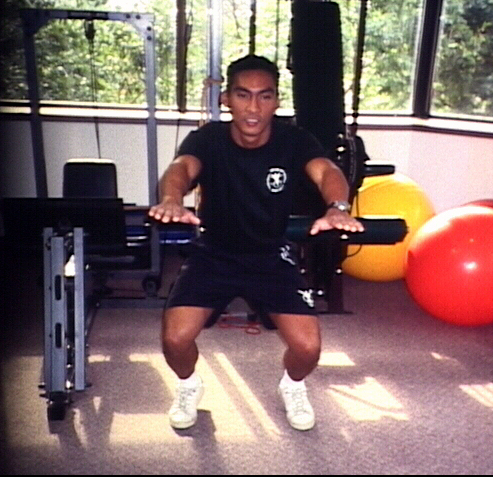ACL Injuries & How to Prevent Them

By Barry Boden, M.D.
The anterior cruciate ligament (ACL) is one of the most commonly injured ligaments in the knee. Each year in the United States there are approximately 150,000 ACL injuries or 1 in 3,000 in the general population. Female athletes participating in basketball and soccer are 2 to 8 fold more predisposed to an ACL injury compared to their male counterparts. The annual cost in the U.S. attributable to the development of arthritis following ACL injuries has been calculated at approximately three billion dollars.
Descriptive videotape analyses of athletes captured while sustaining an ACL rupture have demonstrated that approximately 70% of injuries are noncontact. More recent studies have demonstrated that most injuries occur in team sports such as soccer, basketball, and football where there may be a minor perturbation that disrupts the normal coordination and leads to faulty body/leg mechanics at landing.
The primary force resulting in a non-contact ACL injury is an impulsive compressive axial force on the knee. The dangerous landing position is flat-footed, with the knee close to full extension (straight). When landing flat-footed, the calf muscles are ineffective at absorbing the impact between the foot and the ground. Therefore, the forces are transmitted to the knee causing the ACL injury. Knee valgus (knock-kneed position) appears to be a risk factor in women lowering the threshold for injury. Additional risk factors in women are estrogen, which may cause ligament loosening, and generalized ligamentous laxity.
The goal of prevention programs is to reverse the dangerous straight leg position by creating bending at the joints so the muscles can absorb the landing forces. Emphasis is placed on teaching landing on the balls of the feet with the knees flexed (bent) and the chest over the knees. Feedback on proper knee positioning to prevent inward buckling is also critical to the success of the program. Balance training with the use of wobble or balance boards can also be helpful in reducing injuries.
Prevention drills can be incorporated into the warm-up portion of practice sessions. An example in soccer is a drill where athletes jump over a soccer ball and are trained to land on the balls of their feet with the knees bent and the chest over the knees. Although ACL prevention drills will not eliminate all ACL injuries, they can reduce the number of injuries.
Here's an example of the proper landing technique to prevent ACL injury:

Barry Boden, M.D., specializes in sports medicine at The Orthopaedic Center division in Rockville and Germantown, Maryland. He provides complete care for athletes of all ages and specializes in shoulder and knee conditions, offering non-operative treatment and state-of-the-art arthroscopic surgery techniques. Dr. Boden is the team physician for the athletes at Montgomery College and has served on the medical staff for U.S. Soccer and the Maccabiah Games. He also serves as a consultant at the NIH and a professor at the Uniformed Services University of the Health Sciences.
References:
Boden BP, Torg JS, Knowles SB, et al. 2009. Video analysis of anterior cruciate ligament injury: abnormalities in hip and ankle kinematics. Am J Sports Med 37:252-259.
Boden BP, Sheehan FT, Torg JS, et al. 2010. Noncontact anterior cruciate ligament injuries: mechanisms and risk factors. J Am Acad Orthop Surg 18:520-527.

